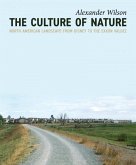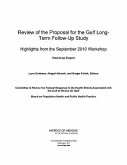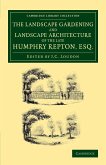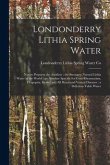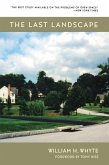- Broschiertes Buch
- Merkliste
- Auf die Merkliste
- Bewerten Bewerten
- Teilen
- Produkt teilen
- Produkterinnerung
- Produkterinnerung
In the World Library of Psychologists series, international experts present career-long collections of what they judge to be their most interesting publications. In this fascinating volume, Professor David Canter reflects on his career.
Andere Kunden interessierten sich auch für
![How Should I Live My Life? How Should I Live My Life?]() George S HowardHow Should I Live My Life?56,99 €
George S HowardHow Should I Live My Life?56,99 €![The Culture of Nature: North American Landscape from Disney to EXXON Valdez The Culture of Nature: North American Landscape from Disney to EXXON Valdez]() Alexander WilsonThe Culture of Nature: North American Landscape from Disney to EXXON Valdez18,99 €
Alexander WilsonThe Culture of Nature: North American Landscape from Disney to EXXON Valdez18,99 €![Nature and Psyche Nature and Psyche]() David W KidnerNature and Psyche38,99 €
David W KidnerNature and Psyche38,99 €![Review of the Proposal for the Gulf Long-Term Follow-Up Study Review of the Proposal for the Gulf Long-Term Follow-Up Study]() Institute Of MedicineReview of the Proposal for the Gulf Long-Term Follow-Up Study21,99 €
Institute Of MedicineReview of the Proposal for the Gulf Long-Term Follow-Up Study21,99 €![The Landscape Gardening and Landscape Architecture of the Late Humphry Repton, Esq. The Landscape Gardening and Landscape Architecture of the Late Humphry Repton, Esq.]() Humphry ReptonThe Landscape Gardening and Landscape Architecture of the Late Humphry Repton, Esq.64,99 €
Humphry ReptonThe Landscape Gardening and Landscape Architecture of the Late Humphry Repton, Esq.64,99 €![Londonderry Lithia Spring Water: Nature Prepares the Antidote: the Strongest Natural Lithia Water in the World: an Absolute Specific for Gout Rheumati Londonderry Lithia Spring Water: Nature Prepares the Antidote: the Strongest Natural Lithia Water in the World: an Absolute Specific for Gout Rheumati]() Londonderry Lithia Spring Water: Nature Prepares the Antidote: the Strongest Natural Lithia Water in the World: an Absolute Specific for Gout Rheumati14,99 €
Londonderry Lithia Spring Water: Nature Prepares the Antidote: the Strongest Natural Lithia Water in the World: an Absolute Specific for Gout Rheumati14,99 €![The Last Landscape The Last Landscape]() William H WhyteThe Last Landscape38,99 €
William H WhyteThe Last Landscape38,99 €-
-
-
In the World Library of Psychologists series, international experts present career-long collections of what they judge to be their most interesting publications. In this fascinating volume, Professor David Canter reflects on his career.
Produktdetails
- Produktdetails
- Verlag: Taylor & Francis Ltd (Sales)
- Seitenzahl: 286
- Erscheinungstermin: 18. Dezember 2024
- Englisch
- Abmessung: 234mm x 156mm x 16mm
- Gewicht: 422g
- ISBN-13: 9781032321493
- ISBN-10: 1032321490
- Artikelnr.: 72110192
- Herstellerkennzeichnung
- Libri GmbH
- Europaallee 1
- 36244 Bad Hersfeld
- gpsr@libri.de
- Verlag: Taylor & Francis Ltd (Sales)
- Seitenzahl: 286
- Erscheinungstermin: 18. Dezember 2024
- Englisch
- Abmessung: 234mm x 156mm x 16mm
- Gewicht: 422g
- ISBN-13: 9781032321493
- ISBN-10: 1032321490
- Artikelnr.: 72110192
- Herstellerkennzeichnung
- Libri GmbH
- Europaallee 1
- 36244 Bad Hersfeld
- gpsr@libri.de
David Canter is one of the U.K.'s most eminent applied social psychologists, being one of the few to be appointed as Honorary Fellow of the British Psychological Society and having been elected as a Fellow of the Academy of Social Sciences, the American Psychological Association and the Royal Society of Medicine. Although he is internationally known for his development of the discipline of Investigative Psychology, bringing scientific precision to 'offender profiling', his earlier and continuing work centres on the development of Architectural/environmental psychology, establishing the well-respected Journal of Environmental Psychology in 1980 and the International Association for People-Environment Studies (IAPS). He has worked as a management consultant to major U.K. companies on risk reduction, amalgamations and briefing for new building complexes and has given advice to government inquiries into disasters. He wrote and presented a six-part documentary series, Mapping Murder, which is also published as a widely read book. He is Emeritus Professor at the University of Liverpool, U.K.
Foreword 1. Architectural Psychology Part 1: Origins of The Psychology of
Place 2. Office Size: An example of psychological research in Architecture
3. The Need for a Theory of Function in Architecture 4. Should we treat
building users as subjects or objects? 5. Judgements of People and Their
Rooms 6. Distance Estimation in Cities 7. The Psychology of Place Part 2:
Elaborating the Theory of Place 8. The Purposive Evaluation of Places 9.
Putting situations in their place: Bridging social and environmental
psychology 10. Intention, meaning and structure: Social action in its
physical context 11. Action and Place: an existential dialectic Part 3:
Methodology - Studying Place Experience 12. A Non-Reactive Study of Room
Use in Modern Japanese Apartments 13. Picture Or Place? A Multiple Sorting
Study of Landscape 14. Revealing the Conceptual Systems of Places Part 4:
Applications - The Theory of Place in Action 15. Intentionality and
Fatality during the Kings Cross Underground Fire 16. The Environmental
Range of Serial Rapists 17. Why do we Leave it so Late? Response to
Environmental Threat and the Rules of Place 18. Creating Places without
Designers Bibliography
Place 2. Office Size: An example of psychological research in Architecture
3. The Need for a Theory of Function in Architecture 4. Should we treat
building users as subjects or objects? 5. Judgements of People and Their
Rooms 6. Distance Estimation in Cities 7. The Psychology of Place Part 2:
Elaborating the Theory of Place 8. The Purposive Evaluation of Places 9.
Putting situations in their place: Bridging social and environmental
psychology 10. Intention, meaning and structure: Social action in its
physical context 11. Action and Place: an existential dialectic Part 3:
Methodology - Studying Place Experience 12. A Non-Reactive Study of Room
Use in Modern Japanese Apartments 13. Picture Or Place? A Multiple Sorting
Study of Landscape 14. Revealing the Conceptual Systems of Places Part 4:
Applications - The Theory of Place in Action 15. Intentionality and
Fatality during the Kings Cross Underground Fire 16. The Environmental
Range of Serial Rapists 17. Why do we Leave it so Late? Response to
Environmental Threat and the Rules of Place 18. Creating Places without
Designers Bibliography
Foreword 1. Architectural Psychology Part 1: Origins of The Psychology of Place 2. Office Size: An example of psychological research in Architecture 3. The Need for a Theory of Function in Architecture 4. Should we treat building users as subjects or objects? 5. Judgements of People and Their Rooms 6. Distance Estimation in Cities 7. The Psychology of Place Part 2: Elaborating the Theory of Place 8. The Purposive Evaluation of Places 9. Putting situations in their place: Bridging social and environmental psychology 10. Intention, meaning and structure: Social action in its physical context 11. Action and Place: an existential dialectic Part 3: Methodology - Studying Place Experience 12. A Non-Reactive Study of Room Use in Modern Japanese Apartments 13. Picture Or Place? A Multiple Sorting Study of Landscape 14. Revealing the Conceptual Systems of Places Part 4: Applications - The Theory of Place in Action 15. Intentionality and Fatality during the Kings Cross Underground Fire 16. The Environmental Range of Serial Rapists 17. Why do we Leave it so Late? Response to Environmental Threat and the Rules of Place 18. Creating Places without Designers Bibliography
Foreword 1. Architectural Psychology Part 1: Origins of The Psychology of
Place 2. Office Size: An example of psychological research in Architecture
3. The Need for a Theory of Function in Architecture 4. Should we treat
building users as subjects or objects? 5. Judgements of People and Their
Rooms 6. Distance Estimation in Cities 7. The Psychology of Place Part 2:
Elaborating the Theory of Place 8. The Purposive Evaluation of Places 9.
Putting situations in their place: Bridging social and environmental
psychology 10. Intention, meaning and structure: Social action in its
physical context 11. Action and Place: an existential dialectic Part 3:
Methodology - Studying Place Experience 12. A Non-Reactive Study of Room
Use in Modern Japanese Apartments 13. Picture Or Place? A Multiple Sorting
Study of Landscape 14. Revealing the Conceptual Systems of Places Part 4:
Applications - The Theory of Place in Action 15. Intentionality and
Fatality during the Kings Cross Underground Fire 16. The Environmental
Range of Serial Rapists 17. Why do we Leave it so Late? Response to
Environmental Threat and the Rules of Place 18. Creating Places without
Designers Bibliography
Place 2. Office Size: An example of psychological research in Architecture
3. The Need for a Theory of Function in Architecture 4. Should we treat
building users as subjects or objects? 5. Judgements of People and Their
Rooms 6. Distance Estimation in Cities 7. The Psychology of Place Part 2:
Elaborating the Theory of Place 8. The Purposive Evaluation of Places 9.
Putting situations in their place: Bridging social and environmental
psychology 10. Intention, meaning and structure: Social action in its
physical context 11. Action and Place: an existential dialectic Part 3:
Methodology - Studying Place Experience 12. A Non-Reactive Study of Room
Use in Modern Japanese Apartments 13. Picture Or Place? A Multiple Sorting
Study of Landscape 14. Revealing the Conceptual Systems of Places Part 4:
Applications - The Theory of Place in Action 15. Intentionality and
Fatality during the Kings Cross Underground Fire 16. The Environmental
Range of Serial Rapists 17. Why do we Leave it so Late? Response to
Environmental Threat and the Rules of Place 18. Creating Places without
Designers Bibliography
Foreword 1. Architectural Psychology Part 1: Origins of The Psychology of Place 2. Office Size: An example of psychological research in Architecture 3. The Need for a Theory of Function in Architecture 4. Should we treat building users as subjects or objects? 5. Judgements of People and Their Rooms 6. Distance Estimation in Cities 7. The Psychology of Place Part 2: Elaborating the Theory of Place 8. The Purposive Evaluation of Places 9. Putting situations in their place: Bridging social and environmental psychology 10. Intention, meaning and structure: Social action in its physical context 11. Action and Place: an existential dialectic Part 3: Methodology - Studying Place Experience 12. A Non-Reactive Study of Room Use in Modern Japanese Apartments 13. Picture Or Place? A Multiple Sorting Study of Landscape 14. Revealing the Conceptual Systems of Places Part 4: Applications - The Theory of Place in Action 15. Intentionality and Fatality during the Kings Cross Underground Fire 16. The Environmental Range of Serial Rapists 17. Why do we Leave it so Late? Response to Environmental Threat and the Rules of Place 18. Creating Places without Designers Bibliography




